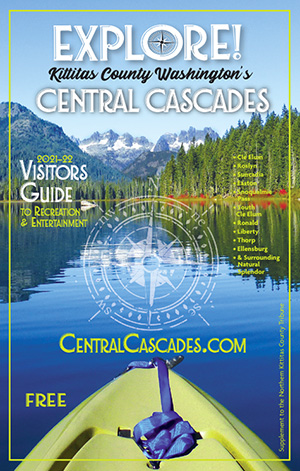OLYMPIA – To help communities along Washington’s coast visualize and prepare for the next tsunami, the Washington State Department of Natural Resources (DNR) has released a new series of tsunami simulations.
Using detailed tsunami models, geologists at DNR, home to the Washington Geological Survey, produced simulations that show the estimated height and speed of waves that would strike the southwest Washington coast following a magnitude 9.0 earthquake on the Cascadia subduction zone.
These simulations are designed to give emergency planners and communities the best possible visualized information about tsunami impacts and timing so they can plan accordingly.
“Tsunamis have struck Washington’s coast many times over our geologic history. It’s a question of when, not if, the next one will hit,” said Commissioner of Public Lands Hilary Franz. “These videos are designed to give the communities that would be most impacted by tsunamis a visualization of what areas are likely to face the most damage so they can make sure their residents, businesses and institutions are secure and resilient.”
The videos show Cascadia tsunami wave simulations for the southwest Washington coast, with detailed, localized impacts shown for Grays Harbor and the Long Beach Peninsula.
DNR has produced static tsunami hazard maps for the area that show maximum inundation, these simulations demonstrate how the tsunami wave heights change throughout the entirety of the tsunami event, increasing and decreasing over a span of many hours.
These simulation videos add to the agency’s work to provide this information to Washington’s communities. They join simulations produced last year for the broader Washington coast and localized simulations for the San Juan Islands and Bellingham/Anacortes areas. All these simulation videos are available on DNR’s YouTube channel.
More is available on the DNR tsunami web page.
320 years since Cascadia last quaked
The last magnitude 9 Cascadia subduction zone earthquake struck in 1700 and produced a tsunami that left sand deposits and drowned forests, which can still be seen in places like the Copalis Ghost Forest in Grays Harbor County. The geologic record shows the Cascadia subduction zone – the offshore area where the Juan de Fuca tectonic plate pushes under the larger North American plate – produces megathrust quakes every 300 to 600 years. There have been about 40 earthquakes on the subduction zone in the last 10,000 years.
More tsunami information available online
The video simulations add to the suite of tsunami preparation materials developed by the geologists within DNR’s Washington Geological Survey.
More detailed maps of tsunami hazards, along with evacuation maps, preparation tips and additional information about these simulations are available online.
Geology in the Public Interest
Under the guidance of Commissioner Hilary Franz, the Washington Geological Survey works to ensure the safety and economic well-being of Washington’s citizens from geologic events. The Survey is the primary source of geological products and services for Washington’s government agencies, businesses, and the public.



